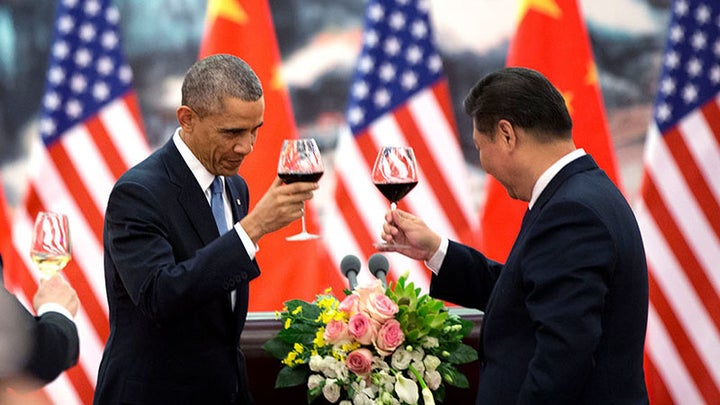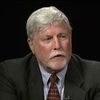
The Trump Administration claims the Paris climate accord is disadvantageous to China and the United States. But President Barack Obama and China’s President Xi Jinping didn’t think so. A year before the international community achieved the Paris climate accord, the two nations entered into a historic bilateral agreement to reduce their greenhouse gas emissions.
As international leaders gathered in New York for this week’s meeting of the United Nations General Assembly, they got another taste of the Trump Administration’s leadership style. It can be summed up in one word: confusion. Sometimes it appears to be a result of ineptitude; other times it appears to be tactical.
The latest example is the ongoing drama about the historic climate agreement that 195 nations achieved in Paris nearly two years ago. Each participating country including the United States submitted a plan on how it would reduce its climate-altering greenhouse gas pollution.
Then came the election of Donald Trump. After months of intrigue about what he might do, Trump announced in June that the United States plans to withdraw from the accord “unless we can re-enter on terms that are more favorable to our country.” It seemed that Trump left the door open to reversing his decision.
Recent events have offered a good opportunity for Trump to do so. Steve Bannon, the senior advisor who reportedly pressed Trump to withdraw from the accord, has left the White House. Hurricanes Harvey and Irma showed with unprecedented fury that global warming is putting Americans in greater jeopardy by making storms more destructive. And the current convergence of world leaders on New York gives them another opportunity to lobby Trump to reverse his position.
As last weekend began, the Wall Street Journal reported “The Trump administration is considering staying in the Paris agreement to fight climate change ‘under the right conditions,’ offering to re-engage in the international deal…” The White House shot down the story by responding that the president’s intentions have not changed.
Then while appearing on CBS’s Face the Nation Sunday, Secretary of State Rex Tillerson reiterated that “the President said he’s open to finding those conditions where we can remain engaged with others…”
It was the latest example of the bewilderment Trump has created about whether or not the world’s second biggest source of climate-altering pollution plans to do anything about it.
First, with his seemingly provisional withdrawal decision last June, Trump used one of his deal-making gambits. He announced an extreme position but hinted he was willing to negotiate. In reality, there is no deal to be made and no interest among other nations to reopen an agreement that took the world 20 years to achieve. It appears that Trump’s real purpose was to please his base while blunting criticism with the hint that he might change his mind.
Second, it is clear even now that Trump and his people do not understand the Paris accord. They seem not to have read it. It calls for voluntary commitments from nations to cut their greenhouse gas emissions. If Trump feels the climate action plan President Obama submitted under the Paris accord was somehow disadvantageous to the country, he could simply submit a new plan. Instead, Trump hopes to show that he is standing up to the world community on behalf of America’s interests.
Tillerson exhibited his lack of understanding when he said Sunday, “if you look at those targets and terms of the Paris climate accord, they were just really out of balance for the two largest economies.” He presumably was talking about China and the United States, who are also the world’s two largest carbon polluters.
However, the commitments that China and the United States submitted under the Paris accord reflected a historic bilateral agreement that the two nations announced in November 2014. On Sept. 3, 2016, President Obama and President Xi Jinping of China jointly reaffirmed their commitments to the Paris deal “offering a rare display of harmony,” as the New York Times put it.
So, Tillerson’s perception that the Paris accord is not good for China or the United States was not shared by the two nation’s leaders. Nor, I assume, is it shared by the hundreds of businesses and investors who urged Trump to remain in the pact.
Other history contradicts the idea that the United States signed onto an “out of balance” deal. In 1997, most nations signed the Kyoto Protocol, an agreement under which developed but not developing nations committed to reduce their carbon pollution. The premise was that the industrial economies were most responsible for the greenhouse gases in the atmosphere, and that developing countries needed to continue using fossil fuels for the immediate future to grow their economies.
The U.S. Senate, whose “advice and consent” was necessary before President Clinton could ratify the Protocol, signaled that it would not concur. It approved a resolution saying that it would not consent to any agreement that did not also include greenhouse gas reductions by developing nations. As a result, President Clinton did not bother to submit the Protocol to the Senate and in March 2001, President Bush announced officially that the U.S. would not participate.
That is one of the reasons why after 10 more years of negotiations, the Paris accord calls for all nations – large, small, rich, poor, developed and developing ― to reduce their emissions.
Third, Trump’s conditional willingness to reengage in international climate action is belied by the fact that he has laid waste to the federal government’s ability to influence America’s carbon pollution. The United States would return to the table with little or nothing to offer in regard to our own substantial emissions.
Whether or not it’s intentional, Trump often leaves the international community and the American people confused. But the evidence shows that the greatest confusion is in the White House itself, even on one of the world’s most important and precedent-setting global agreements.
